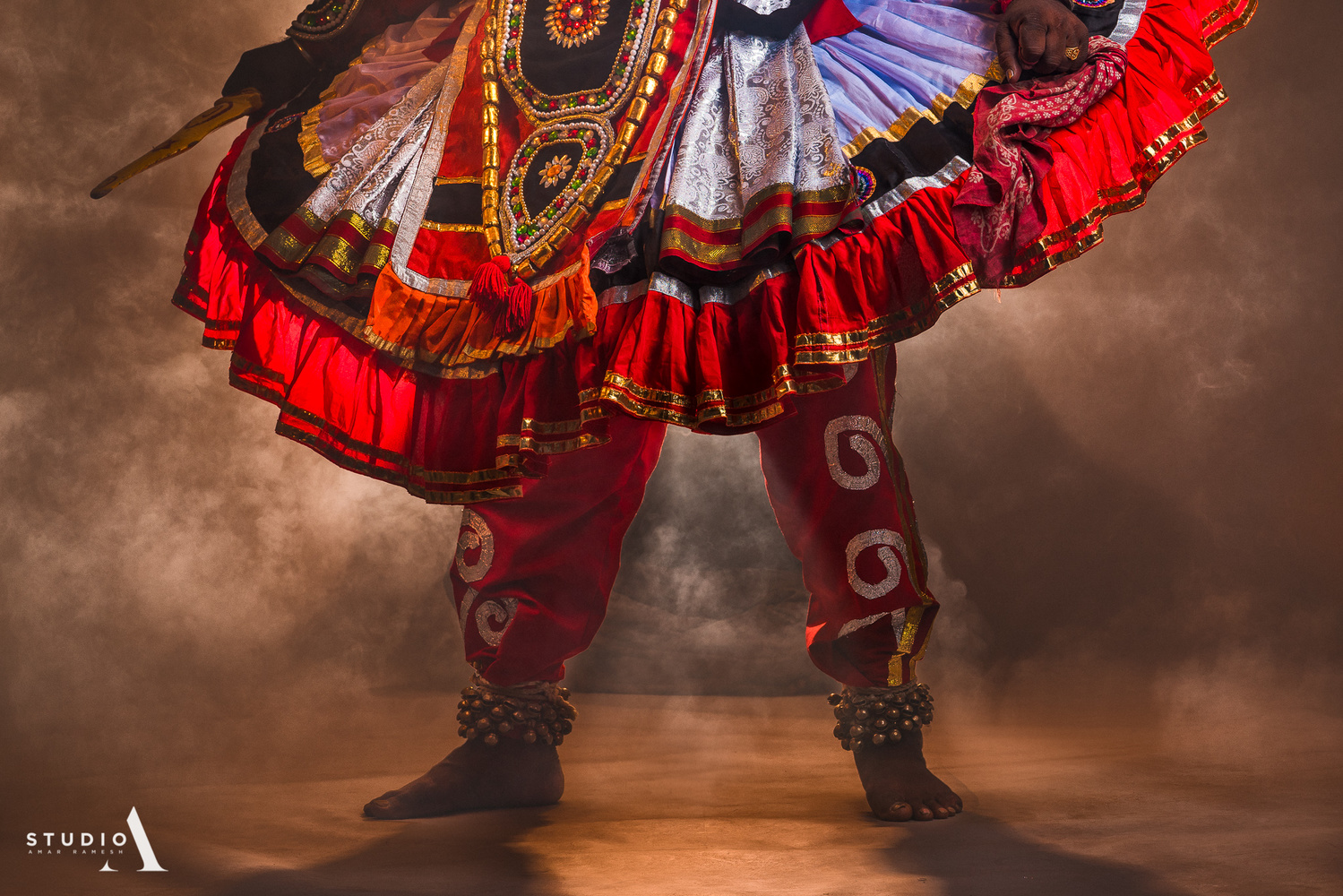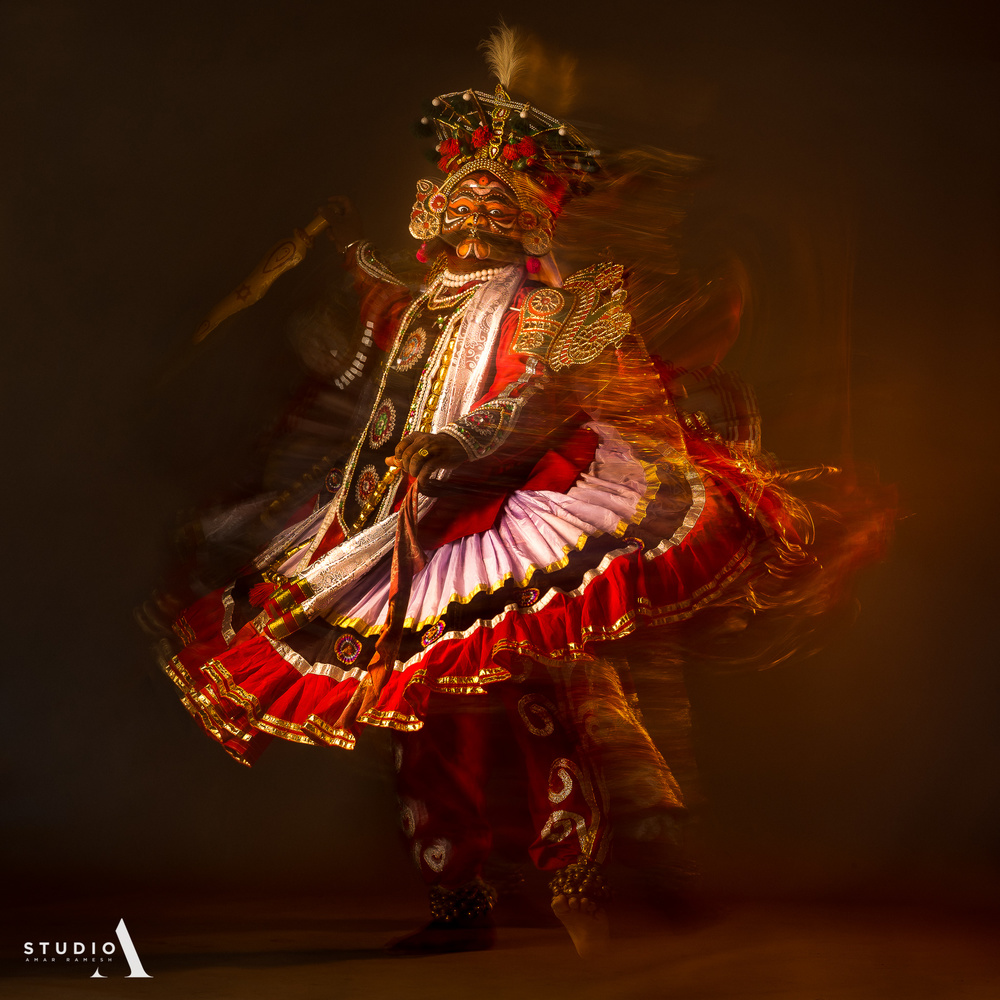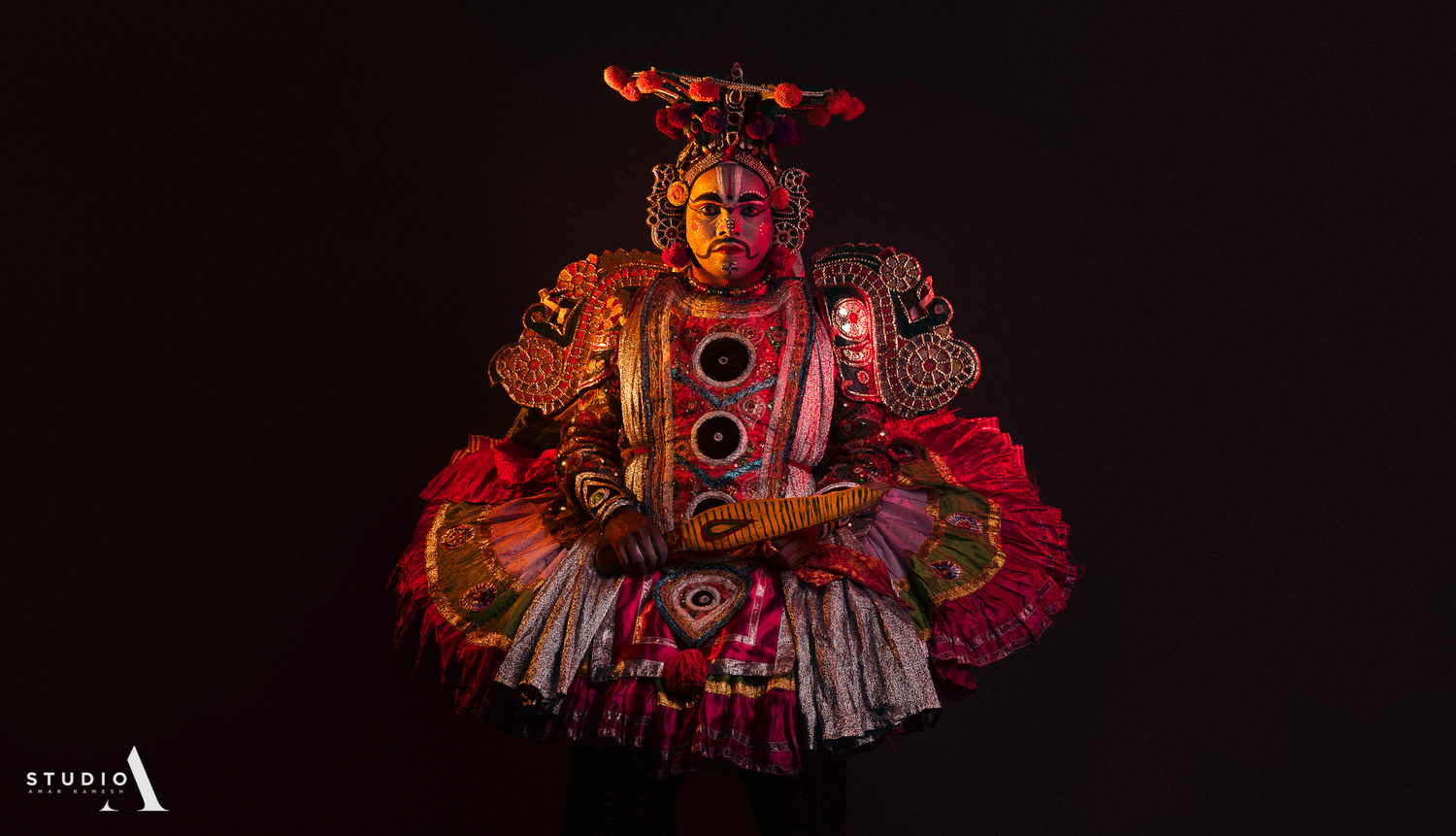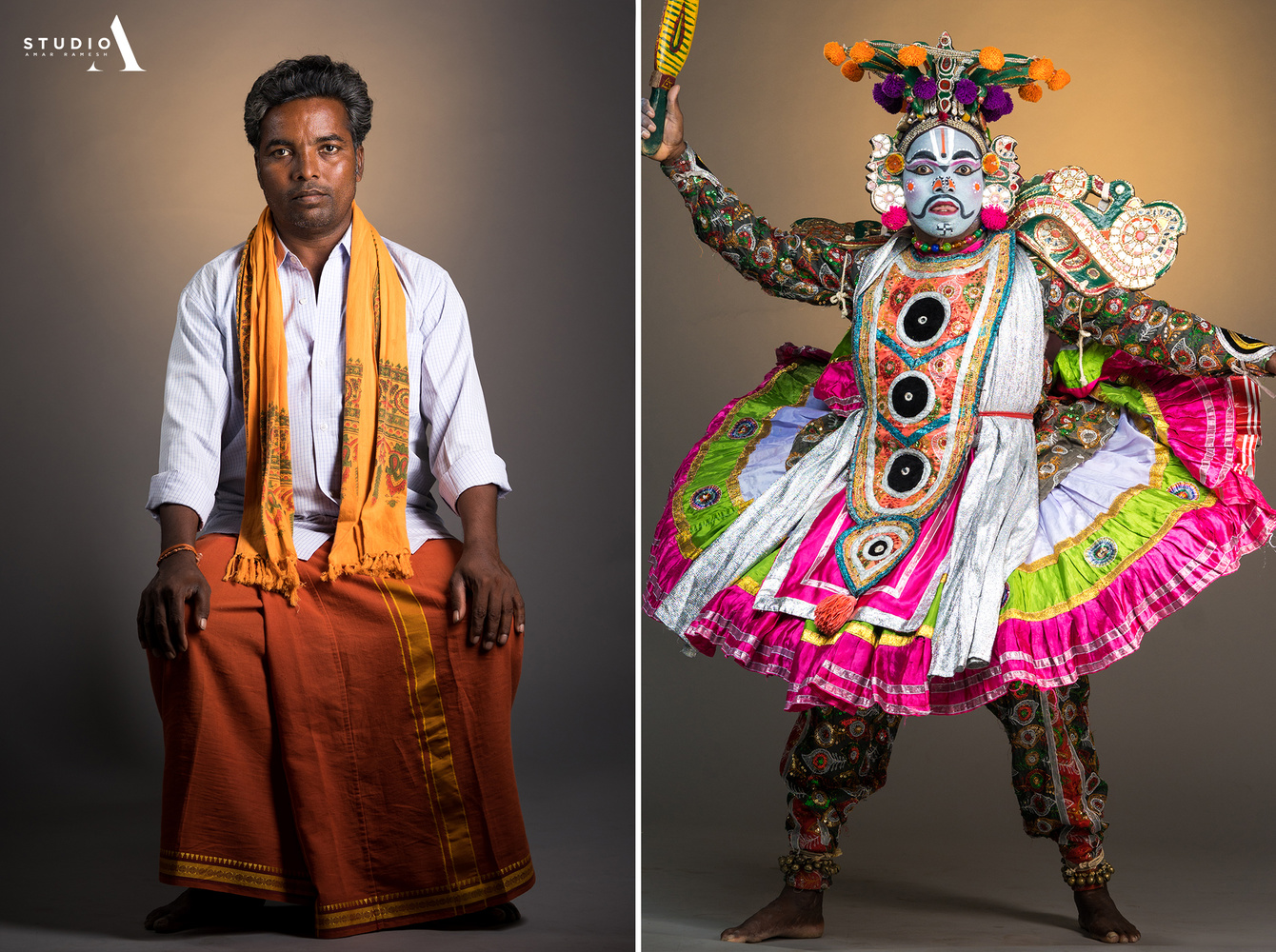[ad_1]
Therukoothu is an ancient folk dance art form, almost 2,000 years old, which originated in South India. Documenting Koothu has always been my dream, and there are so many aspects to it. I wanted to start with the artist, the one who carries the soul of this art.
Koothu (as it is widely called) as a form of entertainment reached its peak hundreds of years ago in Tamil Nadu, India, as mentioned in the ancient Sangam texts about the development literature, music and drama in this part of the world. Going beyond entertainment, Koothu educates the rural people about religion and their history. The set up we had in place was pretty simple. We had two Profoto D2 Monolights (one key light and one fill light) from the sides, and two Profoto A1 studio lights complemented with color papers from the back for bringing out the color effect. With a Sony a7R III set in place and a little smoke on the ambiance to create the mood, we started shooting. The biggest challenge was to recreate that electrifying mood as it would be in real in the outdoors when they’d be performing their plays. It took some time for the artists to come into that trance state and we kept repeating shots until we got the magnificent expressions on their faces. It was all about playing with light and bringing out the drama. Take a look at the pictures below.






Being a Therukoothu Artist is altogether a different world. Unlike other art forms, the artist here has to sing, dance, narrate, and act all at the same time. Preparing for the Koothu is a story by itself, as the artist adorns the detailed makeup, the heavy attire, and the intrinsic costume. Despite the fact that the number of people watching Koothu has sizably reduced and there is not much of a commercial motive in the Koothu, the heart and soul that a Therukoothu artist puts into his/her performance is inspiring. In their routine, they would be different people doing different jobs. But when they become their characters in the play, they transcend to a whole new world. This is our first step to the many miles ahead we look to scale in documenting this quintessential folk art form. Here are some before and after shots, that will depict the transformation I talked about.




[ad_2]
Original Source Link